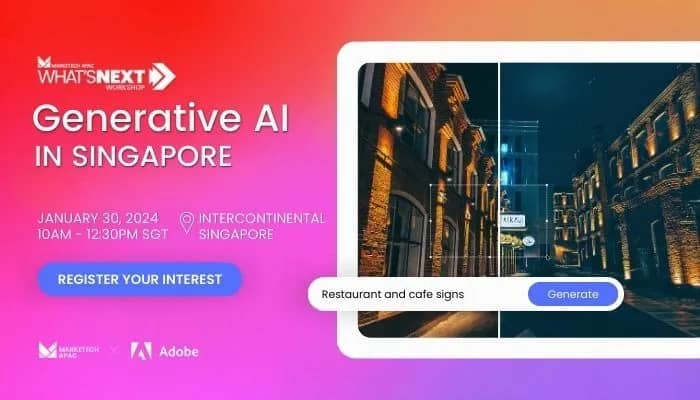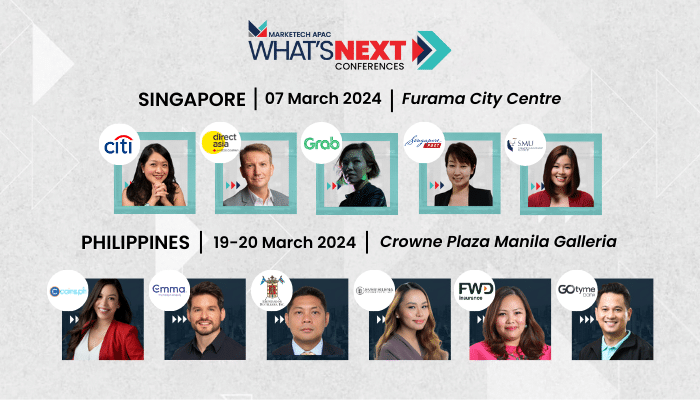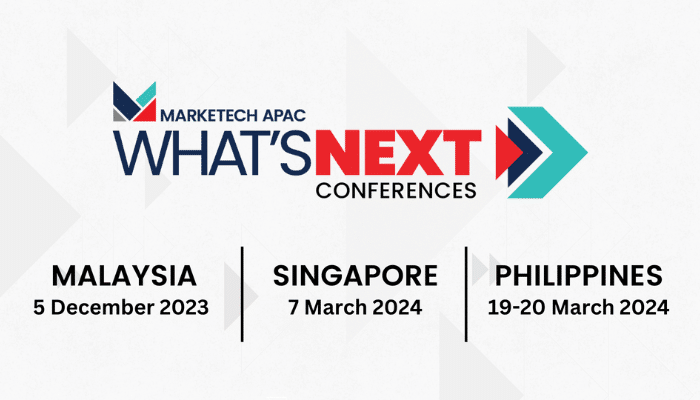In an increasingly fragmented channel landscape, digital out-of-home advertising (DOOH) is helping brands reach more customers than ever before.
Unlike online or mobile advertising channels that are often limited by ‘one-to-one’ devices and mediums, DOOH is a one-to-many medium and has the ability to reach bigger and often captive audiences; and unlike traditional OOH advertising like static billboards and banners, DOOH formats are flexible and dynamic, allowing advertisers to change and optimise their ads in real time.
These advantages have led to DOOH becoming the fastest growing advertising channel in 2023, outpacing all other media channels in ad spend – a trend that is likely to persist as AI technologies continue to be integrated into the ecosystem. AI is now being used to improve every aspect of DOOH advertising, from targeting and personalisation to creative development and measurement.
DOOH is raising the bar
DOOH ads are an increasingly invaluable tool for advertisers who want to reach a large audience, leverage data to target intelligently, and deliver engaging content.
Not only can they be placed in high-traffic areas such as highways, airports, and shopping malls, but they can also be targeted to specific demographics, such as age, gender or by audience groups (e.g.commuters or families), and interests by integrating data from mobile devices and other sources. A DOOH ad for a new clothing store, for example, could be targeted to people who have recently visited a clothing store website or by store proximity to drive footfall to a store opening. DOOH placements can also be bought and sold programmatically, which can be particularly powerful when paired with strategies like geofencing, where relevant ads are programmed to show up as a user enters a particular geographical area.
DOOH ads are also more engaging than traditional OOH ads, such as static billboards. Interactive DOOH ads, for example, allow viewers to engage by using touch screens, gesture recognition, or other technologies. The most interesting juxtaposition of traditional, digital and experiential has been the integration of cutting-edge technology like Augmented Reality, 3D ads, live streaming and gaming tech with billboards.
But it’s not just advertisers – DOOH are winning consumers over too. Research shows that a majority of global consumers (70%) believe DOOH “feels really current” and find it to be a useful format for learning more about products or brands, with 72% describing it as “very” or “quite” informative. A majority also find DOOH ads to be more memorable and trustworthy when compared to social media or online video formats. These favourable perceptions, coupled with the creative and measurement advantages that DOOH offers has made it an essential channel while crafting an omnichannel strategy..
AI is taking DOOH to the next level
With the inclusion of AI, DOOH advertising is becoming more experiential, dynamic and personalised than ever before. Ads can now be tailored to not only the specific demographics and interests of the people who are viewing them, but their emotions, facial expressions and even the environment they’re in by integrating with facial recognition, geolocation, and other data-driven technologies.
AI can also be used to optimise DOOH ad campaigns in real-time, based on factors such as weather, traffic, and even the mood of the audience. The result is not only more effective but memorable advertising. We’ve seen this materialise in pDOOH campaigns done by brands such as Air Asia, in Malaysia, and AQUA in Indonesia.
More recently, giga!, a Singapore-based mobile service provider, integrated pDOOH into its marketing strategy. The advertisements dynamically transitioned between ‘sunny’ and ‘rainy’ versions based on real-time weather conditions in Singapore. When it rained in any part of the island, customers were able to redeem free data. This innovative approach was an extension of the brand’s successful “Feeling Good” four-year anniversary campaign, allowing customers to share new mobile lines with their loved ones for just SGD$1, as detailed in the official brand statement. Notably, the pDOOH campaign was strategically rolled out across prominent locations in Singapore, including One Raffles Place, Raffles City, 313 Somerset, and Bugis Street. Additionally, dOOH posters were also strategically placed at bus stops islandwide to maximise incremental reach and uplift brand image.
Unlocking efficiencies for advertisers
AI has the potential to greatly improve the effectiveness of DOOH advertising. Unlike traditional OOH, DOOH can help advertisers track the number of people who see an ad or take an action after through mobile beacons, QR codes and geolocation technologies for example. AI technology can further supercharge DOOH measurement and targeting through its ability to build a probabilistic model of who has seen the ad.
By taking into account a variety of factors, such as the location of the ad, time of day, and type of device being used, this model can help predict which people are most likely to have seen the ad. This information can then be used to target and amplify future ad campaigns more effectively. The use of AI also opens doors to more engaging campaigns by integrating with innovations like eye tracking technologies, for example, that can measure where people look when they see a DOOH ad and how long they look at it for. It can also help unlock efficiencies by automating tasks like testing and optimising creatives in real time.
As AI technologies continue to evolve and improve, brands will continue to gain from the ability to innovate, track and optimise their DOOH advertising. It’s the ambitions of the AI-focused businesses being formed today that will likely drive this growth in the years to come. And with Southeast Asia currently a hotbed for AI innovation, brands and businesses in the region have everything to gain from this shift.

This article is written by Divya Acharya, Vice President, Solutions Design & Development & Marketing Science, APAC, at GroupM Nexus
The insight is published as part of MARKETECH APAC’s thought leadership series under What’s NEXT 2023-2024. What’s NEXT 2023-2024 is a multi-platform industry initiative which features marketing and industry leaders in APAC sharing their marketing insights and predictions for the upcoming year.

















